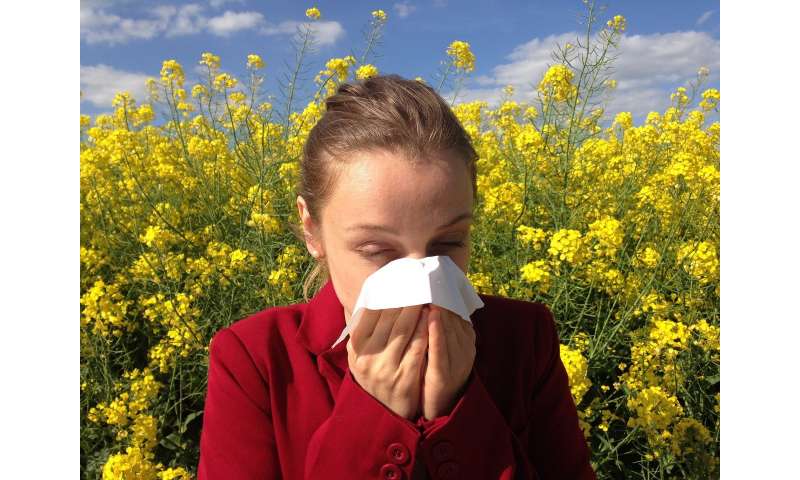
For people with allergies, contact with pollen leads to symptoms such as sneezing, rhinitis and watery eyes. This may sound trivial, but is in fact a complex correlation of physiological processes. As these have not yet been fully understood, we do not know exactly yet how allergies develop and how the symptoms are triggered.
Symptoms can be predicted in advance
A research group led by the Institute of Environmental Medicine at Helmholtz Zentrum München and Technical University of Munich (Research Association UNIKA-T), examined patients with pollen-induced allergic rhinitis and people without allergy over a period of one year. In addition to a digital symptom diary kept daily by the study participants, the researchers took samples of blood and nasal secretion. They then compared the immune variables (cytokines, chemokines and pollen-specific immunoglobulins) in these samples during and after the pollen season. As a result, they identified the endogenous messenger substances IL-8 and IL-33 as well as the antibodies sIgG4 and sIgE as biomarkers (= measurable characteristics with relevance for biological processes). These biomarkers show a significant correlation with pollen-specific nasal symptoms (proven by Spearman’s rank correlation coefficient). The researchers were now able to predict the severity of the symptoms even before the start of the pollen season based on the expression rate of these biomarkers in people with and without allergy, independent of their individual genetic disposition.
Multiple applications for biomarkers
Source: Read Full Article